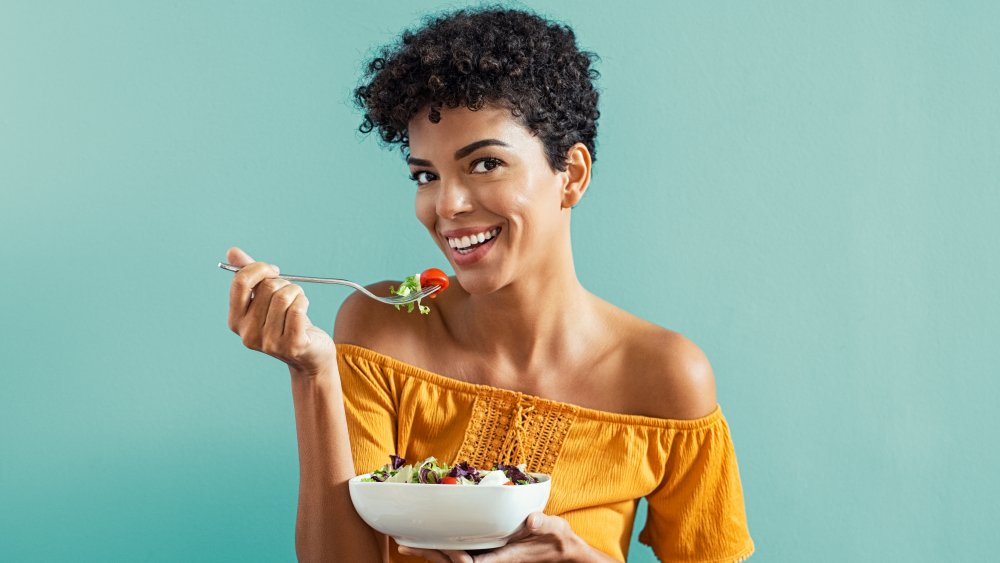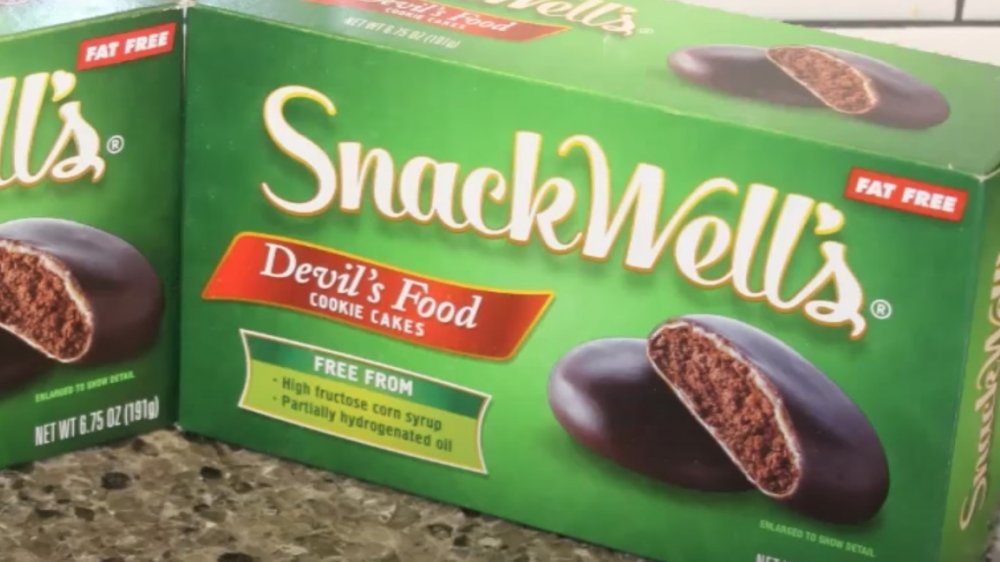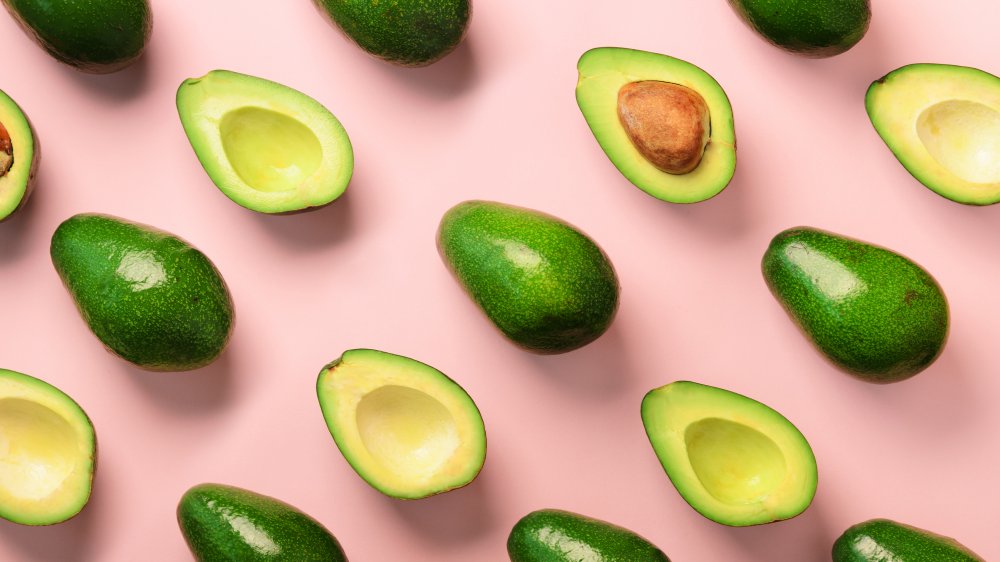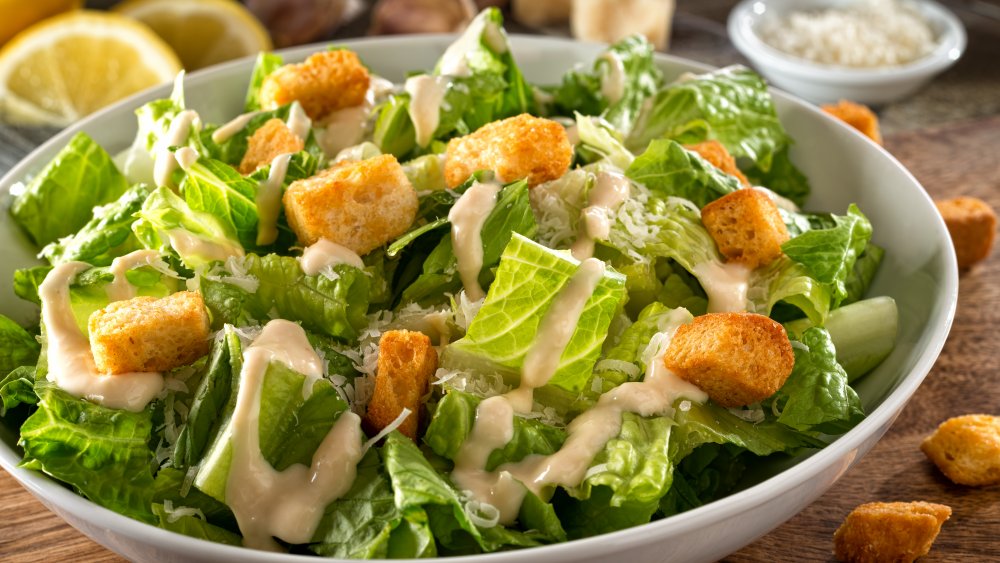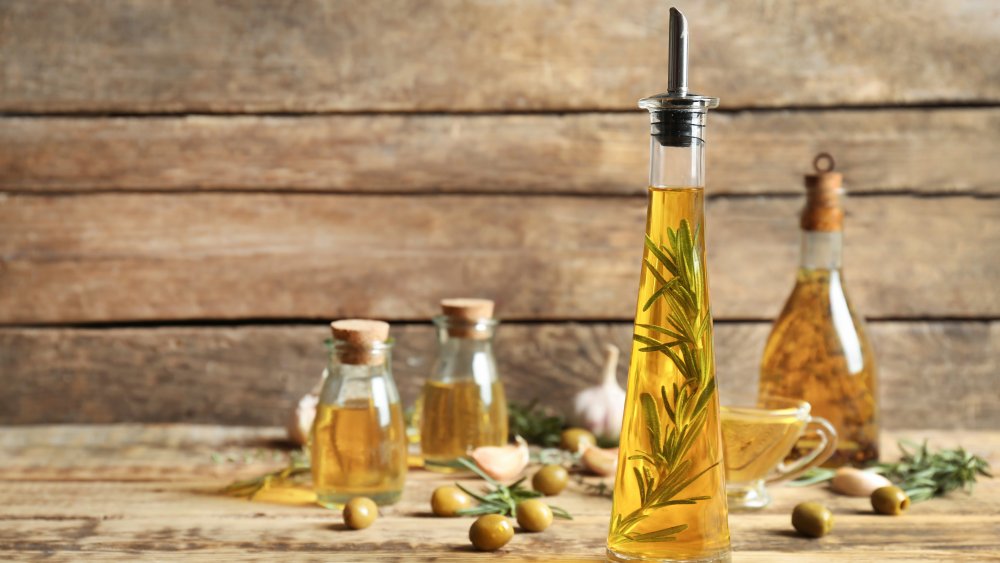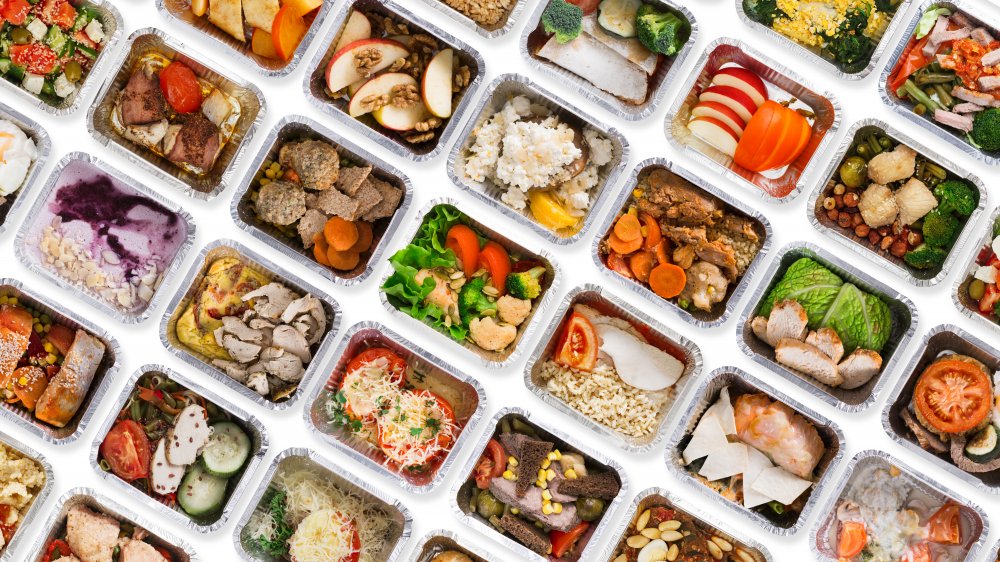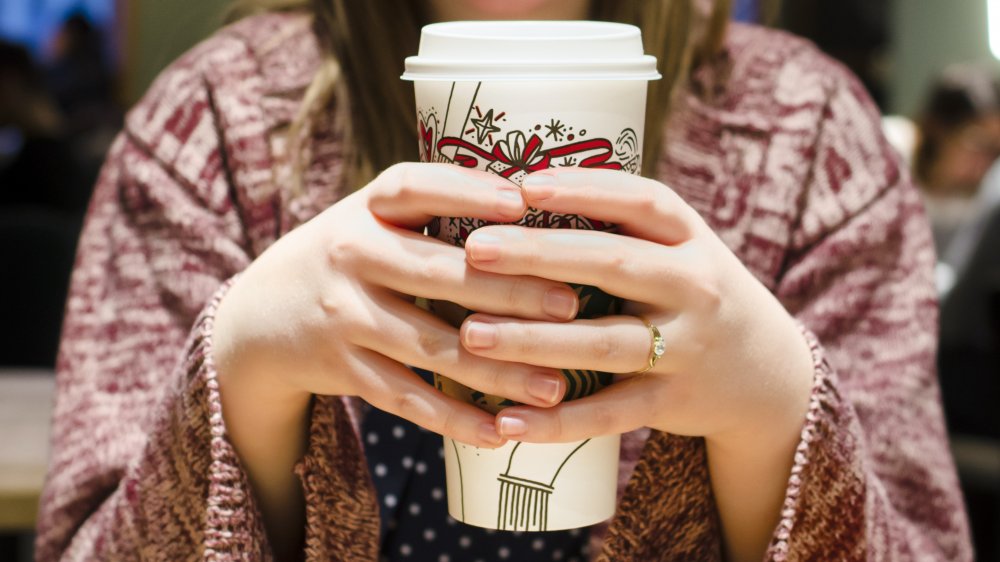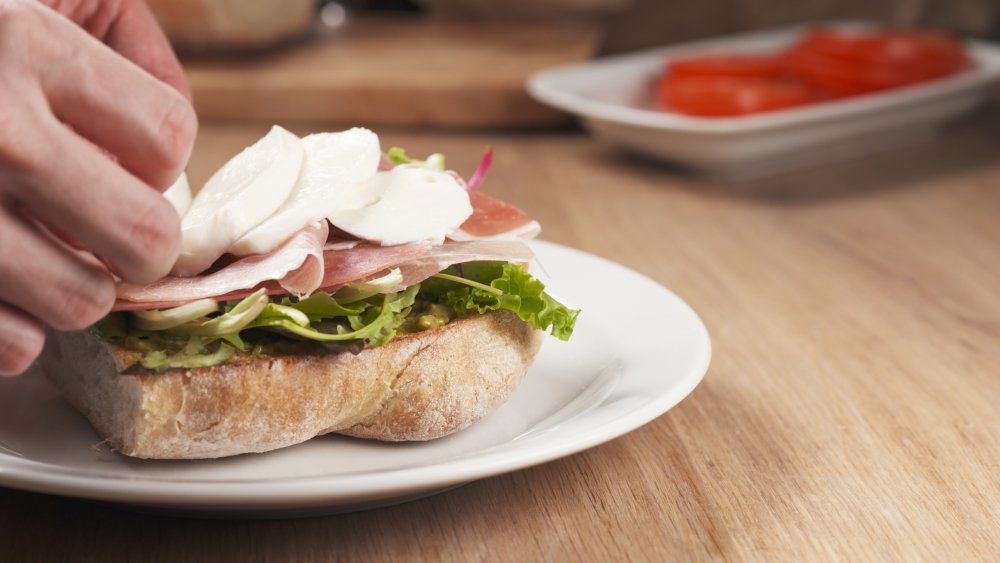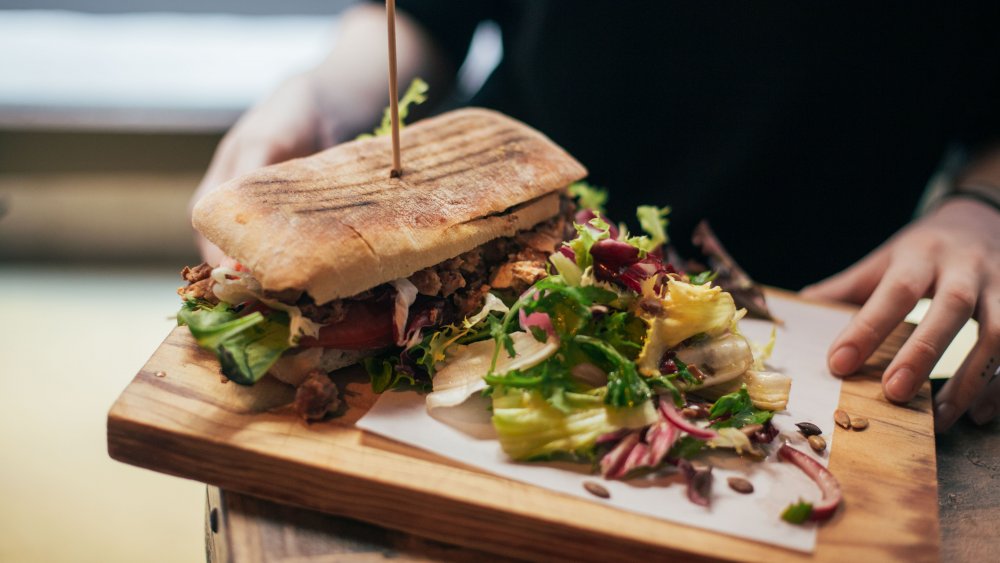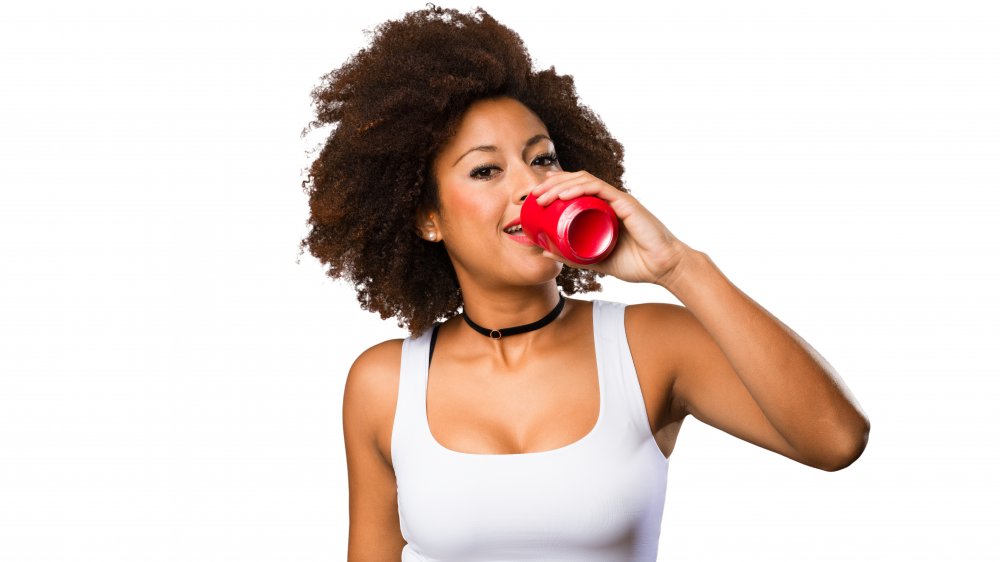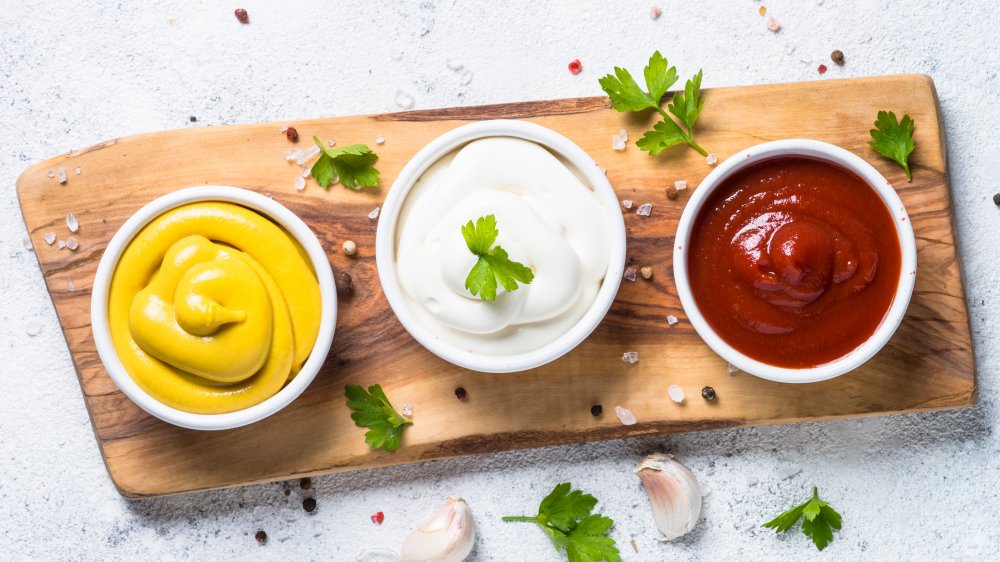Sneaky Ways You're Eating More Calories Than You Realize
There are some seriously sneaky ways you're eating more calories than you realize. It can be difficult to know just how much you're taking in at times, especially if you don't have a lot of time to plan and cook your own meals. Given that we're all pulled in a million different directions with work, school, family, and who knows what else, just making sure you're eating nourishing foods in the first place is a struggle.
To that end, it's actually pretty darn easy to eat more calories than you planned on, even if you have the best of intentions. Let's face it: We're not all dietitians or nutritionists, so sometimes you just have to trust your gut, hoping you make the best possible food choices for yourself and your family. And since every body is unique in its own way, how different people respond to different ways of eating really can vary.
Are you determined to stop mindlessly eating? Are you curious about how the calories can add up despite doing your due diligence? Read on to discover the many ways you're eating more calories than you realize.
If you're eating while distracted, you may eat more calories than you realize
If there was one thing everyone got more of in 2020, it was time in front of our screens. Whether you were hopping onto Zoom meetings for work, making sure your wee one was all set for virtual schooling, or learning TikTok dances to stave off the boredom, you probably relied on your devices more than ever before.
However, if you're forgetting to cut the tether when it's time to eat, you may be eating more calories than you realize, according to registered dietitian Erin Hendrickson. "When our mind is preoccupied on something other than the dining experience, it becomes challenging for our brain and digestive system to communicate properly," she told Health Digest. "The same thing happens when we power through lunch and eat at our desks." Um, true.
The same applies to your nightly Netflix snacks, something Hendrickson says to be super careful with. "According to a study by Physiology and Behavior, individuals were likely to eat an extra 36 percent or more of calories while watching TV," she continued. To counteract it? Be mindful in your eating, Hendrickson advised.
If you believe the package, you might eat more calories than you realize
Some foods at the grocery store don't need labels, such as fresh broccoli or a bunch of bananas. This is because they're whole foods, or foods that weren't manufactured. However, labels are required for foods that come in cans, boxes, or bags. As such, becoming a discerning reader of labels can help you know exactly what's in the food you're buying — and that's an effective way to understand what you're putting into your body, according to the U.S. Food and Drug Administration.
Bearing that in mind, it's important to also be aware of the way some products are marketed, as noted by Dr. Vikram Tarugu, a Florida-based gastroenterologist. "Just as you might describe a meal as 'healthy,' simply seeing the words 'low fat' on a food label can make you think you're eating something healthier than you actually are," he explained to Health Digest. And that can cause you to consume many more calories than you realize.
Consider SnackWell's Devil's Food Cookie Cakes, which boast no fat content, but still contain 14 grams of added sugars per serving, according to their website. The devil really is in the details!
You may eat more calories than you realize if you assume what you're eating is good for you
Whole foods are some of the healthiest things you can eat, as noted by Healthline. To that end, it's always good to make sure that you're getting plenty of them in your diet. Think: fruits and vegetables, nutrient-rich fish, whole grains, legumes, lean proteins, dairy, and seeds.
However, that doesn't necessarily mean you should eat these foods with wild abandon, according to registered dietitian Jodi Greebel. "I often have people tell me they eat a whole avocado because it is a healthy fat," she revealed to Health Digest. "But, while it is good for you, a serving should really be a small part of that avocado because of the high number of calories a whole fruit contains."
The same philosophy should be applied to nuts and seeds that are high in fat, as you can eat more calories than you realize pretty easily. And while we all love potatoes, you'll want to practice moderation with those as well, as noted by Harvard University.
You may be eating more calories than you realize if you don't get the dressing on the side
When you think of dishes that are super healthy, what's the first thing that pops to mind? If you said salad, that's no surprise, as tons of people would no doubt agree with you. And given that many salads feature fresh, leafy greens, a variety of vegetables, and sometimes even fruit, they really can be a good option — especially when topped with a lean protein, as noted by WebMD.
However, if someone else is making your salad for you, be careful with the dressing. "If you don't get the dressing on the side, you're eating more calories than you realize because restaurants may use far more dressing than you'd use at home," Summer Yule, registered dietitian, shared with Health Digest. "I noticed that I am typically given one quarter cup of dressing in a restaurant." Compared to the one or two tablespoons that Yule usually has at home? That's quite the difference!
Do you eat out at restaurants often? You may be eating more calories than you realize
Next time you head out to a restaurant with your friends or family, be as mindful as you can, Jamie Johnson, registered dietitian nutritionist, advises. "If you eat out often, you may be eating more calories than you realize because restaurant portions are typically much larger than what an actual portion should be," she told Health Digest. And that's distorted what many Americans believe is an acceptable portion size, as noted by the National Institutes of Health.
If you head out knowing what a regular portion looks like, you'll notice the difference, according to Johnson. "Grains should be a quarter of your plate, but Italian restaurants usually will give you an entire plate of noodles," she continued. She added that such establishments might also offer you endless breadsticks, which can drastically increase your food intake.
Top it off with the fact that you're more likely to drink more alcohol while dining out, according to a study in BMC Public Health, and the calories definitely add up!
If you cook with oils and fats, you may be eating more calories than you realize
Let's face it: Fats are yummy. While a poached egg may be the healthier option, fried eggs arguably taste better. And there's a reason that butter made a comeback, once people realized it wasn't the devil, according to NPR.
Even if you're super mindful and only use olive oil when you're sautéing your salmon, you still might be eating more calories than you realize, as noted by certified personal trainer Jamie Hickey. "You can't help using a bit of oil, but man the calories in oil sure add up," he explained to Health Digest. "Each tablespoon of olive oil has almost 120 calories, so even the 'healthier' oils will still add a lot of calories to your foods."
The trick to only eating what you want to when it comes to oils and fats is caution, adds Hickey. "If you're not willing to cut oil out of your meal altogether, you'd better be prepared to count each tablespoon you add into the frying pan, onto the baked chicken, or over your salad dressing," he continued.
If you eat pre-packaged foods, you may be eating more calories than you realize
Let's say you're at the health food store and you want to get something to eat before you start shopping. You might be tempted to think that anything you grab in the market — whether that's pre-packaged sushi, a frozen meal, or a grab-and-go sandwich — is a calorie-conscious option. But according to registered dietitian Trista Best, overeating on health food is a surefire way to eat more calories than you realize. "This is especially true for ultra-processed health foods on store shelves," she shared with Health Digest. "Many are packed with refined carbohydrates, sugar or sugar alternatives, and fat to provide texture and flavor."
In order to avoid eating more than you initially planned for, Best says you should aim to be an informed consumer, even at the healthiest of stores. "The calories, fat, and sugar all add up quickly when we don't pay special attention to the nutrition label," she continued.
Sipping on fast food smoothies? You may be eating more calories than you realize
One popular way to have a healthy breakfast at home is to make yourself a smoothie with fruit, protein, and other healthy ingredients, according to the Mayo Clinic.
While making a yummy smoothie can be a great way to start the day, it's a different kettle of fish when it comes to buying a smoothie, says registered dietitian Bansari Acharya. "Fruit smoothies from fast food restaurants or frozen yogurt shops contain way more calories than you might imagine," she revealed to Health Digest. "Most of these places don't use any fresh fruits, and are usually using fruit juices that are filled with added sugars." So if you're trying to consume fresh whole foods, well, that smoothie ain't it.
That's certainly not the case for every smoothie out there, of course, as some are healthier than others. As always, reading the label can help you parse out the best options.
If you order a flavored coffee beverage every morning, you might be eating more calories than you realize
Do you start your day by stopping by the coffee shop drive-thru on your way to work? Unless you're ordering regular coffee with a splash of milk or a few shots of plain espresso, you might be consuming far more calories than you realize. "That morning java may be adding extra calories from sugary syrups, steamed milk, whipped cream, or specialty creamers," registered dietitian Erin Hendrickson told Health Digest. "An average sized seasonal latte (we're looking at you, Pumpkin Spice Latte) contains approximately 380 calories." That's a lot in one beverage!
But fear not, caffeine fanatics: You don't have to swear off your morning macchiato or latte for good. Hendrickson just suggests that you customize your drink. "Reduce calories by requesting one pump of flavored syrup instead of two, request a lower fat milk, or leave off whipped cream," she continued.
Do you add cheese to your meals? You may be eating more calories than you realize
You'd be hard-pressed to find someone who doesn't love at least one kind of cheese. Whether that's mozzarella on pizza, cream cheese on a bagel, or a fat slice of cheddar on a sandwich, this beloved food has a way of making everything taste better.
However, if you're eating cheese with all of your meals, chances are you're eating more calories than you realize, according to registered dietitian Lisa DeFazio. "Cheese is extremely high in calories; for a very small piece the size of a domino, it will have about 100 calories," she revealed to Health Digest. "Therefore adding cheese to salads, bread, crackers, soups, and anything containing cheese is going to be very high in calories." She added that many of her weight-loss clients are self-professed cheese lovers.
So if you're worried about eating too many calories, it might be time to cut down on your cheese intake.
If you don't keep a food log, you may be eating more calories than you realize
You've probably heard the conventional wisdom that suggests we eat three square meals every day: breakfast, lunch, and dinner. According to Harvard University, that's a good way to stay full throughout the day, especially if you're trying to lose weight.
But if you're someone who tends to graze, nibble, and snack without thinking about it, there's a good chance you're eating more calories than you realize. As such, you may want to start keeping track of your eating habits.
"I suggest you keep a food log for a few days to track habits that may have evolved because of new stresses in life, food left on kids' plates, or even a candy jar calling from the counter," registered dietitian nutritionist Jennifer Cohen Katz explained to Health Digest. "Observing eating behaviors with a food tracking app like Lose It or My Fitness Pal is a helpful way to get a clear picture of where the extra calories are showing up."
Eating off of a big plate? You may be eating more calories than you realize
If you've been on planet Earth for more than a decade or two, you probably remember a time when the medium-sized cup at your favorite fast food joint used to be the large size. The same is true for the french fry containers, which have grown along with their beverage containing counterparts.
That definitely hasn't escaped the notice of registered dietitian Amanda Izquierdo, who says there are consequences to these changes. "Our plate and bowl sizes have grown substantially over the last 30 years, which often means we are doubling or even tripling serving sizes," she shared with Health Digest.
To that end, if you don't want to wind up eating more calories than you realize, make sure that you're not replicating those changes in your own kitchen, suggests Izquierdo. "Swap your dinner plates for salad plates and use a smaller dessert bowl instead of a soup/cereal bowl," she continued. That way you'll be less prone to over-serving yourself and, by extension, less prone to overeating.
Do you drink soda or juice every day? You may be consuming more calories than you realize
Are you one of those people that just doesn't like the taste of water? If so, you may find yourself drinking other kinds of beverages in order to quench your thirst. However, if you're not careful what you're drinking, you may be consuming more calories than you realize, according to registered dietitian Christie Gagnon. "One can of soda will provide you with about ten teaspoons of sugar and 150 calories," she told Health Digest. "If you're drinking soda throughout the day, that can really add up!"
It's not just soda that can be the culprit either, as Gagnon says other choices that might seem healthy aren't as sensible as you may think. "Fruit juice contains about seven teaspoons of sugar per cup," she continued. "Although this is natural sugar, it can also lead to increased caloric intake." So if you're really concerned about your sugar consumption, you might have to look for ways to better enjoy H20.
If you are a fan of condiments, you may be eating more calories than you realize
Condiments can be a wonderful way to spice up your food and add a real depth of flavor to your meals. After all, what good is a plate of French fries without ketchup, anyway?
However, just as you have to be careful with salad dressing, so too do you have to be careful with condiments like BBQ sauce, mayonnaise, ranch, and other dipping sauces. "Laying on the condiments can contain more calories than you realize because measurements may vary," registered dietitian Carrie Kirkland explained to Health Digest. "It's always a good idea to keep condiments on the side, to be in control."
Kirkland also has a technique you can use to moderate your condiment intake. "If you are trying to save calories, dipping your fork into the sauce is a good way to still get some flavor in each bite without overdoing it," she continued. "You can always add more, but you can't take away." Sound advice indeed!

